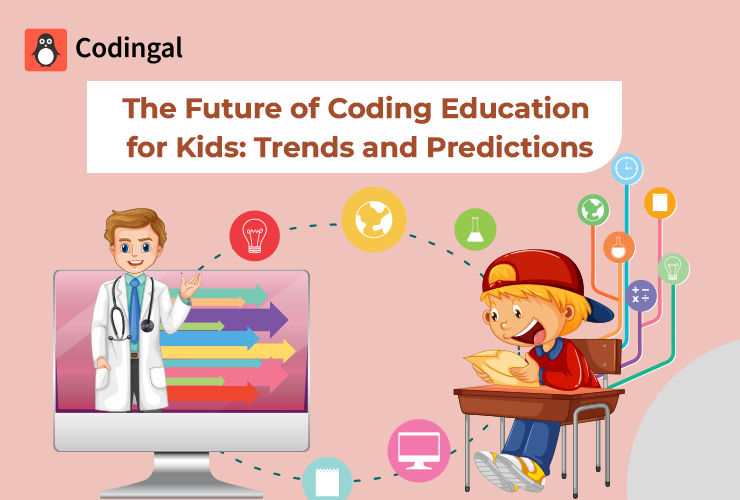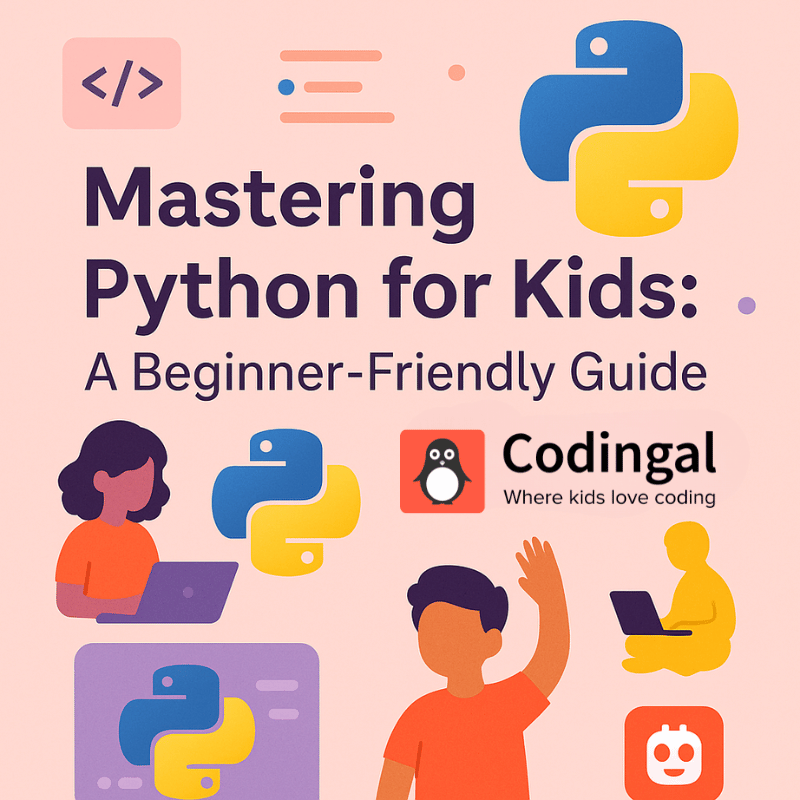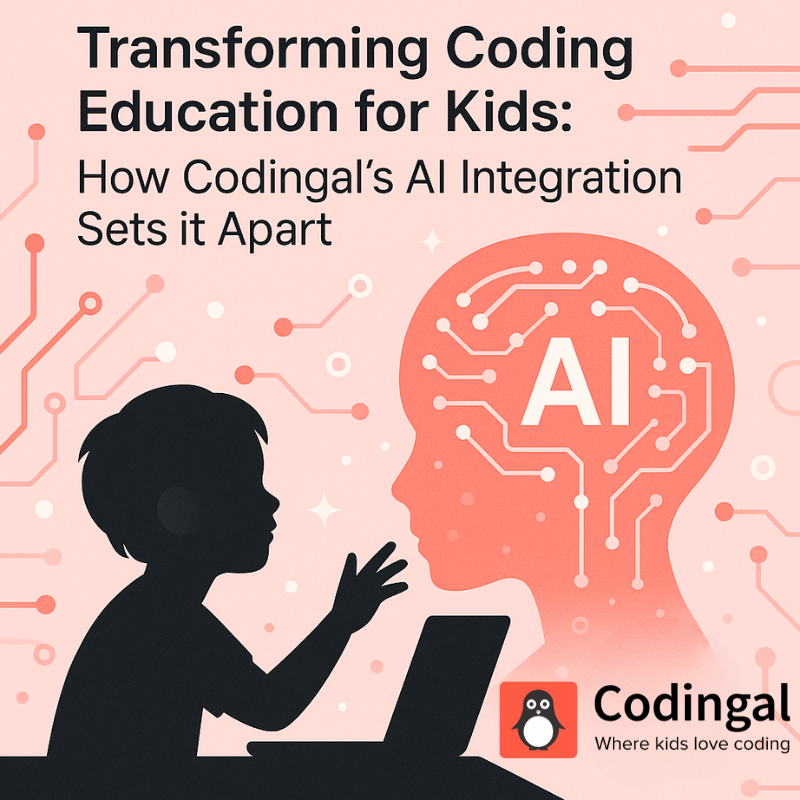The Future of Coding Education for Kids: Trends and Predictions
- Online Learning and Virtual Coding Camps: Making Coding Education Accessible and Convenient
- Gamification and Interactive Learning: Engaging and Fun Coding Education for Kid
- Artificial Intelligence and Machine Learning: Transforming Coding Education
- Collaborative Learning and Peer-to-Peer Teaching: Fostering Communication and Problem-Solving in Coding Education
- Conclusion
The future of coding education for kids holds great promise as an integral part of preparing them for the rapidly evolving digital landscape. In today’s technology-driven world, coding skills are increasingly essential for success across various industries. As a result, the demand for coding education for kids is growing exponentially, highlighting the importance of equipping young minds with the tools to thrive in a digital future.
Introducing coding tricks to children at an early age can profoundly impact their development. It nurtures problem-solving abilities, logical thinking, and creativity and fosters a deep understanding of computational concepts. Furthermore, coding education promotes teamwork, collaboration, and communication skills, preparing children for the collaborative work environments they will likely encounter in their future careers.
Moreover, coding learning for kids opens doors to diverse opportunities. It empowers children to be active creators rather than passive consumers of technology, enabling them to shape the digital world around them. By developing coding skills, children gain a competitive edge in the job market, as many industries increasingly require digital literacy and programming proficiency.
This article explores the emerging trends and predictions in coding education for kids, highlighting its significance and the transformative impact it can have on their future prospects.
Online Learning and Virtual Coding Camps: Making Coding Education Accessible and Convenient
The rise of online coding learning and virtual coding camps for kids has revolutionized the field of coding education, making it more accessible and convenient than ever before. With the advent of technology and the widespread availability of high-speed internet, children can now learn coding from the comfort of their homes, at their own pace, and with flexible schedules. Here are the benefits of online coding camps:
- Accessibility
Online learning and virtual coding camps eliminate geographical barriers, allowing children worldwide to access quality coding education. It provides a wealth of resources, interactive tutorials, and coding challenges that cater to different skill levels, ensuring children can progress at their speed.
- Convenience
Children can learn to code anytime, anywhere, with an internet connection. This flexibility is particularly beneficial for kids with busy schedules or those who live in remote areas where access to coding classes may be limited.
- Create a Collaborative and Interactive Learning Environment
Through online platforms, children can connect with coding instructors and peers from around the globe, fostering a sense of community and encouraging collaboration. These camps often incorporate live coding sessions, group projects, and competitions, enhancing children’s problem-solving and teamwork skills.
Gamification and Interactive Learning: Engaging and Fun Coding Education for Kid
Gamification and interactive coding tricks and techniques have transformed the landscape of coding education, making it more engaging and enjoyable for kids. By incorporating game-like elements into coding lessons, children can have fun while developing their programming skills.
One of the key benefits of gamification in coding learning is increased motivation. By turning coding into a game, children are more likely to stay focused, set goals, and strive to achieve them. The element of competition, rewards, and levels of progression in coding games can inspire children to push their boundaries and invest more time and effort into learning.
Interactive learning tools enhance the retention of coding concepts. When children actively participate in coding activities and solve problems in a game-like environment, they are likelier to remember and apply the concepts effectively. The hands-on interactive learning approach helps children better understand coding principles.
Example: Several coding games and interactive learning tools have gained popularity among kids. For example, “CodeCombat” offers an adventure-based game where children write code to guide their characters through challenges. “Scratch” allows kids to create interactive stories, games, and animations using a block-based programming language. “Robot Turtles” is a board game that introduces young children to basic coding concepts.
Artificial Intelligence and Machine Learning: Transforming Coding Education
Artificial Intelligence (AI) and Machine Learning (ML) are revolutionizing how we teach and learn to code. These technologies have the potential to personalize the learning experience for each student, offer real-time feedback, and provide innovative coding education tools.
Benefits:
AI and ML algorithms can analyze students’ progress, coding learning patterns, and strengths and weaknesses. With this information, they can tailor coding lessons to meet the specific needs of each student. Personalized learning paths help students grasp coding concepts at their own pace, ensuring a deeper understanding of the material. Adaptive learning platforms leverage AI and ML to adjust the difficulty level of coding exercises based on individual performance, keeping students challenged yet motivated.
Real-time feedback is another significant benefit of AI and ML in coding trick education. These technologies can analyze code written by students, detect errors, and provide instant feedback on how to correct them. This immediate feedback loop enables students to learn from their mistakes, reinforcing coding principles and enhancing their problem-solving skills. Additionally, AI and ML-powered systems can offer hints, suggestions, and alternative solutions, guiding students towards more effective coding practices.
Example: Several coding education tools for kids harness the power of AI and ML. For instance, “Algobrix” uses AI to teach coding by integrating physical building blocks and an app to create interactive coding challenges. “Sphero Edu” combines robotics and coding, allowing kids to program robots using a block-based language enhanced by AI capabilities. “Bitsbox” is an online platform that employs AI to personalize coding projects based on a child’s interests and skill level.
Collaborative Learning and Peer-to-Peer Teaching: Fostering Communication and Problem-Solving in Coding Education
Collaborative learning and peer-to-peer teaching have become integral components of coding education, offering numerous benefits to students as they navigate the programming world. These approaches emphasize cooperation, communication, and problem-solving, enhancing the learning experience.
Advantages:
- Opportunity for Students to Work Together on Coding Projects
Students gain different perspectives and insights through group discussions and shared experiences, fostering a deeper understanding of coding concepts. Collaborative learning encourages active engagement and participation as students collaborate, exchange ideas, and learn from one another.
- Enhance Communication Skills
Peer-to-peer teaching, where students take turns teaching and explaining coding concepts to their peers, enhance communication skills. When students explain coding principles in their own words, they reinforce their understanding of the material and develop the ability to articulate complex ideas effectively. Moreover, peer teaching builds confidence as students become mentors and help their peers grasp coding concepts.
- Create a Supportive and Inclusive Classroom Environment
Students learn to appreciate and respect diverse perspectives, fostering a sense of community and cooperation. This collaborative approach also cultivates empathy and teamwork, which are crucial skills in the collaborative nature of coding projects in the real world.
Conclusion
In conclusion, the future of coding education for kids is bright and full of exciting possibilities. As the demand for coding skills grows, investing in coding education for kids is crucial to prepare them for the digital future. By equipping children with coding tricks and skills, we empower them to be active creators, critical thinkers, and problem solvers in a technology-driven world.
Codingal is committed to shaping the future of coding learning by leveraging these trends and embracing the transformative power of coding for children. Together, let’s unlock their potential and pave the way for a generation of young coders who will thrive and positively impact the digital age.












